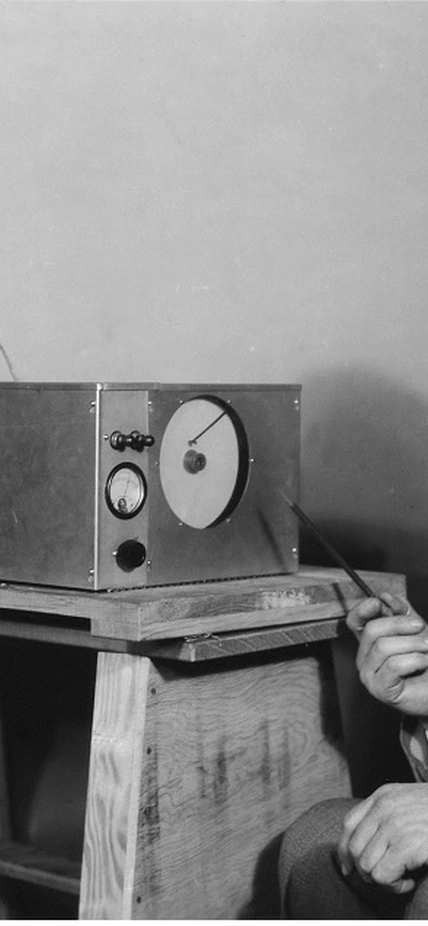Washington, DC— The American Institute of Physics’ Center for History of Physics has awarded the Carnegie Institution for Science a $10,000 grant to organize and preserve the archives of scientist Oliver H. Gish and open them for research.
Gish was a prominent figure in American geophysics in the early 20th century and an authority in the study of atmospheric and terrestrial electricity. He was a staff scientist at Carnegie’s Department of Terrestrial Magnetism in Washington between 1922 and 1948 and also worked in academia, industry, and government research. His papers are held in the department’s archives.
Gish conducted some of the first cosmic-ray research in the United States under Robert A. Millikan at the University of Chicago during World War I. At Carnegie, he designed and built instruments for the Explorer II manned balloon flight into the stratosphere in 1935. In the 1940s, Gish and collaborator George R. Wait led a pioneering, joint Carnegie–U.S. Air Force investigation of the electrical fields in thunderstorms using instruments mounted on B-29 bombers. He also contributed to our understanding of magnetic storms and the daily variation of the geomagnetic field.
Gish died in 1987 at the age of 103. His extensive files, containing five decades of his professional correspondence, research notes, instrument designs, and photographs, were donated to the Department of Terrestrial Magnetism in 2015 by his granddaughters, Nancy R. Crow and Dorothy C. Crow-Willard.
“The Gish Papers will be a valuable resource for historians of science,” said Shaun Hardy, librarian for Carnegie’s Department of Terrestrial Magnetism and Geophysical Laboratory, who will lead the project. “Not only do they document the lifelong professional activity of a notable researcher, but they provide insights into the organization of American and international geophysics during the decades of its transformation into a modern discipline.”
The AIP’s Grants to Archives program supports projects to make accessible records, papers, and other primary sources that document the history of modern physics and allied fields, such as astronomy and geophysics. Its funding will enable Carnegie to organize and catalog the Gish Papers and to create a website to showcase Gish’s career and scientific contributions.
Image Caption: Oliver H. Gish with his electrical conductivity apparatus for the Explorer II manned balloon flight into the stratosphere in 1935. Image is courtesy of the Carnegie Institution for Science, Department of Terrestrial Magnetism.
